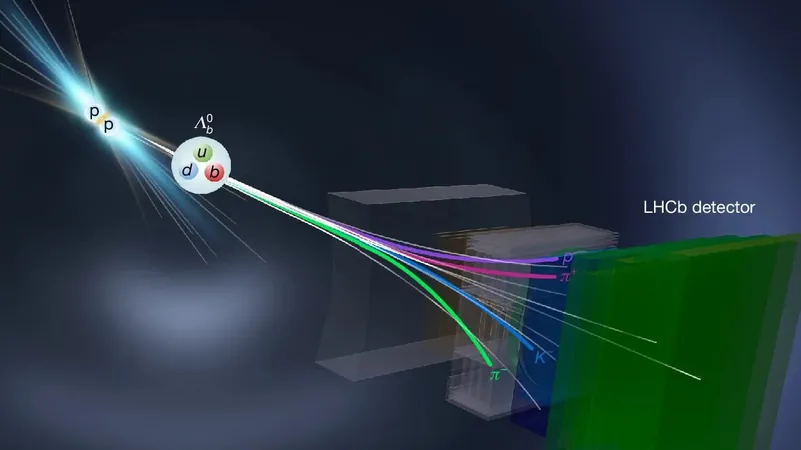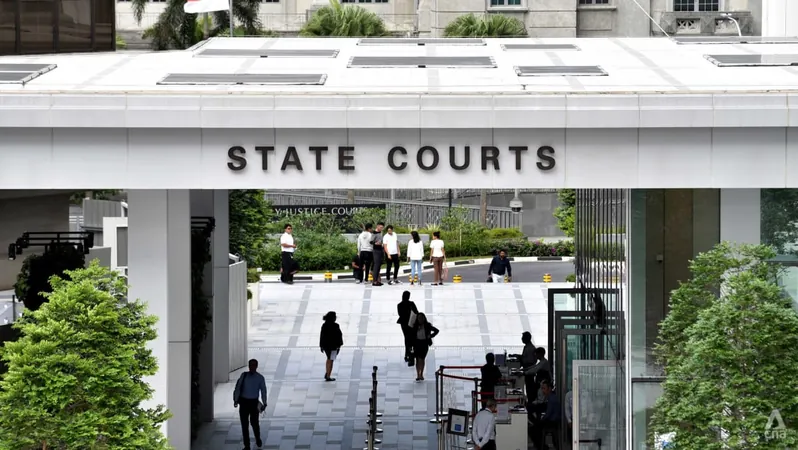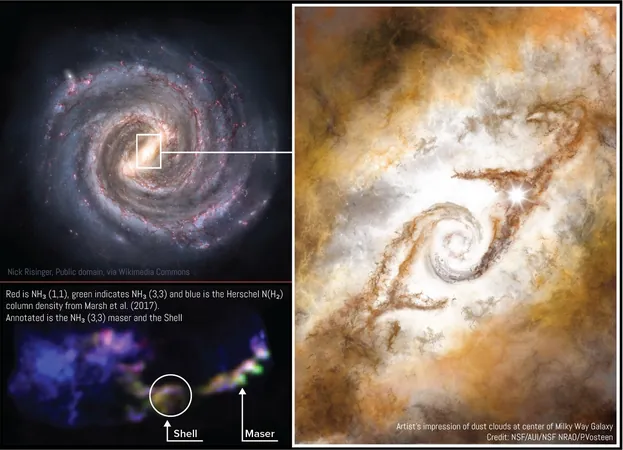
CERN Makes Groundbreaking Discovery: First-Ever CP Violation in Baryons!
2025-07-17
Author: Mei
In a monumental revelation, scientists from CERN's LHCb Collaboration have unveiled the first experimental evidence of charge-parity (CP) symmetry breaking in baryons. This groundbreaking finding aligns with the Standard Model of particle physics and could pave the way for a deeper understanding of the enigmatic matter-antimatter imbalance that shapes our universe.
Current cosmological theories suggest that, following the Big Bang, equal amounts of matter and antimatter were created. Yet, in today's universe, we observe a striking predominance of matter. This astonishing discrepancy poses one of physics' greatest mysteries, begging the question: Why do we see so little antimatter?
The exploration of CP violation began back in 1964, when pioneers James Cronin and Valentine Fitch conducted experiments on neutral K mesons, demonstrating that this fundamental symmetry was indeed broken. Their work earned them the Nobel Prize in Physics in 1980, and inspired physicist Andrei Sakharov to propose that, if amplified during the universe's infancy, CP violation could help explain why matter triumphed over antimatter.
Until now, while some CP violation had been observed in various mesonic systems, it had never been detected in baryons—composed mainly of protons and neutrons, the building blocks of matter. This omission left scientists eagerly searching for clues about potential inconsistencies between baryonic CP violation and current theoretical predictions.
The recent research by Xueting Yang and the LHCb team focused on the decays of beauty baryons and their antiparticles, produced during intense proton-proton collisions at the Large Hadron Collider (LHC) between 2011 and 2018. These heavy baryons contain an up quark, a down quark, and a beauty quark, and can decay in multiple ways.
By examining the decay pathways—one leading to a proton, K-meson, and a pair of pions—the researchers sought to identify any asymmetry in the decay processes between baryons and antibaryons, a key indicator of CP violation. Truly, they found that the CP violation observed was consistent with the Standard Model, showcasing a confidence level of 5.2 sigma—meaning it is unlikely to be a statistical fluke.
Although they established that CP violation exists in beauty baryons, it's noteworthy that other decay channels remain elusive, with insufficient data to confirm additional deviations. Yang notes, "Our current results don't rule out potential extensions to the Standard Model since these often lack precise predictions regarding CP violation in baryons."
As the LHC enters its third run, researchers aim to gather more data, potentially unveiling new insights and intermediaries involved in baryon decays. Such discoveries could not only refine our understanding of CP violation but also provide critical constraints on existing theoretical models.
This groundbreaking research highlights not only the achievements of particle physics at CERN but also underscores the ongoing quest to unravel the fundamental laws of the universe. Stay tuned as scientists continue to probe deeper into the mysteries of matter and its origins!




 Brasil (PT)
Brasil (PT)
 Canada (EN)
Canada (EN)
 Chile (ES)
Chile (ES)
 Česko (CS)
Česko (CS)
 대한민국 (KO)
대한민국 (KO)
 España (ES)
España (ES)
 France (FR)
France (FR)
 Hong Kong (EN)
Hong Kong (EN)
 Italia (IT)
Italia (IT)
 日本 (JA)
日本 (JA)
 Magyarország (HU)
Magyarország (HU)
 Norge (NO)
Norge (NO)
 Polska (PL)
Polska (PL)
 Schweiz (DE)
Schweiz (DE)
 Singapore (EN)
Singapore (EN)
 Sverige (SV)
Sverige (SV)
 Suomi (FI)
Suomi (FI)
 Türkiye (TR)
Türkiye (TR)
 الإمارات العربية المتحدة (AR)
الإمارات العربية المتحدة (AR)